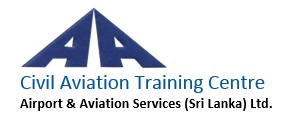

 |
 |
|
Lesson 2: Functions of our company (ctd.)
|
[Page 2.6] |
|
Airport service function (ctd.) |
|
|
Airline facilitation |
|
|
|
|
|
|
|
Apart from the passenger who is served by both the airport and the airline, the airline itself is served by the airport. Airlines are therefore important customers of an airport. Providing the necessary facilities for the airlines to operate their flights to and from the airport is airline facilitation.
|
|
|
Airlines need many facilities to operate. When a plane lands it requires a location to dock. Usually the plane is allocated a gate so that it can dock at the gate for the passengers to disembark. Once the plane docks, the boarding bridges are positioned and the doors are opened. Then the passengers can come out of the plane and easily come into the terminal to reach the immigration. Same bridge may be used by passengers who board the outgoing flight. Sometimes it may not be possible for the airport to allocate a gate for the plane. In such instances the plane is allocated a slot in the apron and ramp service vehicles are used to ferry the passengers to the terminal. |
|||
|
Boarding bridges positioned on docked plane
|
|
|
Entrance to the plane from the boarding bridge |
|||
|
The baggage must be unloaded and brought into the terminal so that they may be placed on the baggage belts. This is another service the airport has to provide.
|
|
|
|
Baggage being unloaded from the plane
|
|
|
|
For the departing flights, airlines need to check-in each passenger, provide him a boarding pass and accept his check-in baggage (hold baggage) if any. These are done at check-in counters. The airport must provide facilities for the airlines to man the check-in counters. While it is the airline staff that man the counters, it is the airport that must provide the facilities. Check-in counters must have computer terminals for the ticketing staff to operate, weighing scales to weigh the baggage, printers to print the boarding pass and baggage tags, and maneuvering gear to send the check-in baggage to the conveyor belts. The computer terminals are networked so that they can access the airline’s central reservation systems. All these facilities must be provided and maintained by the airport. Check-in counters are usually shared by airlines and are used in turns according to the departure schedules but at some airports where certain airlines have more frequent usage, it is common to dedicate some counters to such airlines. Arriving passengers must be informed the counter that they must check-in via the visual flight information display units mounted at various locations of the terminal. Depending on the level of operation of the airline, the airport may need to provide additional counters also to the airline.
|
|
|
|
Airline check-in counters. Airline name is displayed for easy location
|
|
|
Passenger’s hold baggage being tagged. Accepting the hold baggage for carrying is one of the important tasks performed at check-in.
|
|||
|
Apart from the check-in counters there are other facilities that airlines require to provide their services to the passengers. Many airlines operate lounges for their business class passengers. The airport must allocate space for the airline to operate the lounge and also provide basic facilities like air-conditioning or heating, wi-fi, and janitorial services.
|
|
|
|
An airline lounge. Many airlines operate a lounge at the airport for their priority passengers.
|
|
|
|
As the airline uses the airport as a primary workplace for its staff, it may require office space at the airport. Many airlines have offices at the airport itself and this is very useful for the airport as well because airline officials who are in a position to take decisions on day to day operations are available in the airport premises who could be readily contacted if the need arises. It is very important that the airport and the airlines work together to run the airport operations effectively and efficiently. |
|
|
|
|
|
|
|
Every major airport is usually the home base for at least one airline. That airline uses that airport to park its fleet of planes when they are not in flight, and to carry out maintenance on them. Planes are parked in hangars which are large shelters that can accommodate at least one plane inside it. Planes need Maintenance, Repair, and Overhaul (MRO) of its engines and other systems. Hangars that have the facility to perform MRO are called MRO hangars. Usually airlines that have MRO hangars provide MRO services to other airlines as well, for a fee.
|
|
|
|
Atlanta airport Georgia USA is the home base for Delta Airlines.
|
|
|
|
The airport must provide space and other facilities like electricity, water, drainage, and access roads for the airline wishing to set up a hangar at the airport. This too is a part of airline facilitation. |
|
|
|
Large hangars have room to park several planes.
|
|
|
An MRO hangar. These hangars have facilities to perform maintenance, repairs and overhaul on planes. |
|||
|
So now, we have a general idea of what the ‘airport service function’ at a commercial airport is. It is one of the functions performed by our company. To sum up, it includes the following: |
|
|
|
|
|
|
|
|
|
|
|
Next, we will look at the ‘Air Navigation Service Function’, another function performed by our company. |
|
Powered by IT Division for delivery by the VTW CATC © AASL All Rights Reserved